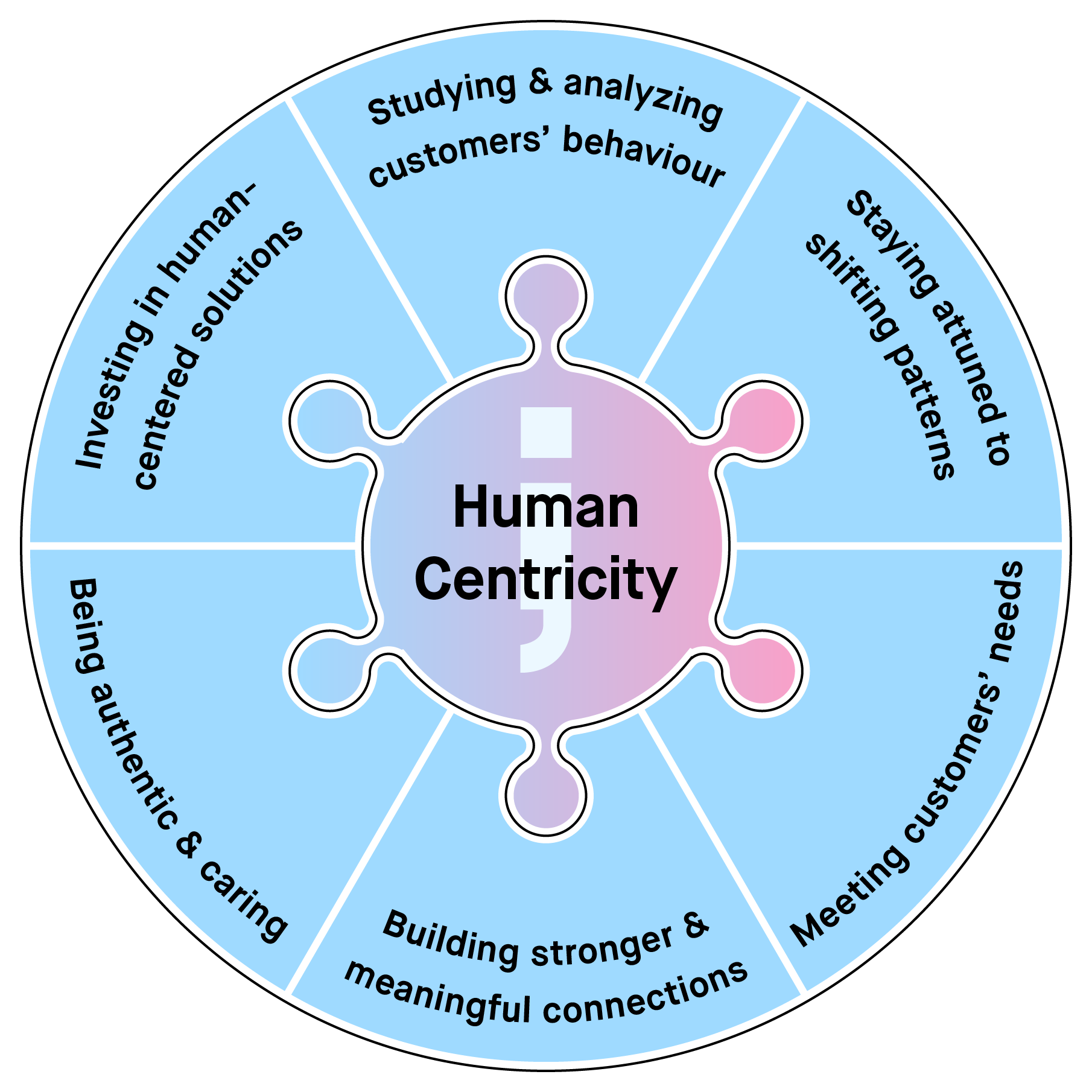//5 min
Through human-centricity, we are able to create intuitive, user-friendly solutions that meet the specific needs of both individuals and communities. But what does this look like in action?
We sat down with Abhishek Dahiya, CDO at intive, to discuss intive's strategic priorities for 2023, lessons from 2022, the challenges that lie ahead, design and engineering team synergies, and much more.
1. What do you think are the biggest challenges that businesses are facing right now? And what role does intive play?
The biggest challenges we’re facing right now are occuring on the human level, so we’re hyper-focused on how consumer behavior is evolving in response to the world around us. With so many recent challenges affecting our daily lives – from the COVID-19 pandemic to war, through economic struggles and energy crises – people are looking for new ways to create balance in their lives when unexpected happens. To truly prioritize the needs of our customers, we must remain sensitive to these changing dynamics.
For intive, consumer and human centricity mean delivering products and services that reflect a deep sense of authenticity and care. To achieve this, our dedicated research team is constantly studying and analyzing consumer behavior. Their insights directly impact the products we create, guiding our discovery, delivery, and evaluation processes to ensure that we consistently meet our customers' needs. By staying attuned to these shifting patterns and investing in truly human-centered solutions, we can build stronger, more meaningful connections with our audience.

2. What design innovations do you think will be the most impactful in 2023?
This year, the most impactful innovations will be focused on refining and reimagining business models, rather than on groundbreaking product developments. While the UX side of existing technologies can always benefit from small improvements, the real potential for transformation lies in how we structure and operate our businesses. This means we can expect many small but powerful changes, each of which will complement existing functionalities and combine to create new business models.
The first example will be an enhanced focus on sustainability, which has already influenced the way we use transportation. From various mini models of shared economies to subscription-based public transportation, we are constantly witness to new, emerging models that prioritize efficiency and environmental responsibility. Another impactful innovation is ChatGPT, which will unlock new possibilities, streamline many processes, and change the way we build services. This cutting-edge tool is on track to revolutionize many aspects of the business world. Finally, we can anticipate exciting developments in FinTech, which will be focused on KYC, authentication, and security. Overall, it’s clear that 2023 will be an exciting year for business innovation and transformation.
3. What are the design team's strategic priorities for 2023? And where are the biggest challenges for attaining success in these areas?
The goal for 2023 is quite simple – we want to continue enhancing the quality of craftsmanship and expertise we offer and produce. From the outside, this may seem straightforward, but it is an incredibly complex task. In the case of intive, we are talking about multiple domains, a large design team, and a huge variety of projects. So we really need to make sure that everything works as it should. In order to do this, we’re improving the work system, drawing appropriate conclusions, and ensuring that our level of knowledge caters to the project requirements.
4. Looking back on 2022, what is the biggest lesson you've learned as Chief Design Officer at intive?
The first thing I’ve learned is about transformation and the fact that it is not as logical as everyone thinks. Of course, logic is necessary to keep things moving forward, but the truth is that transformation begins in the heart and mind. That's where it all starts and that's where our culture is born – and this is the first lesson. The second one is about being in alignment. Over the years I've learned that achieving alignment requires continuous communication and not just one, two, or even 10 meetings. It is something that you have to work really hard on and consistently nurture.
5. Can you tell us a bit about how the design and engineering teams collaborate with each other? Do you find anything unique about how these areas of expertise come together at intive?
Design and engineering work side by side, but they also need to complement one another. Witnessing how easy it is for us to collaborate and how smoothly it goes is phenomenal. What I love about intive is that we're not pigeonholed into being just designers or just engineers. We are a team. A team that solves problems together and brings innovative ideas to life. This is our superpower. So not only we do have the operational excellence in making sure that the skill sets are in the right places, but we also approach each project with the right mindset. Maybe it's easy for me to say because I love my team, but I see the proof of it every day at work.
6. Can you share an example to show how intive brings a human-centric approach to design?
Not that long ago we were involved in a project for the Scottish government called Civetech and I believe it's the most human-centric project we've done in recent years. Our team managed to build an AI that enables people with various disabilities to communicate to the government what services they really need.
Helping people who have previously experienced difficulties in communicating their needs and making it easier for them to receive the proper help is one of the most rewarding things we have ever done. Moreover, testing this solution with people and receiving positive feedback from them was very uplifting. What a motivation to keep working!